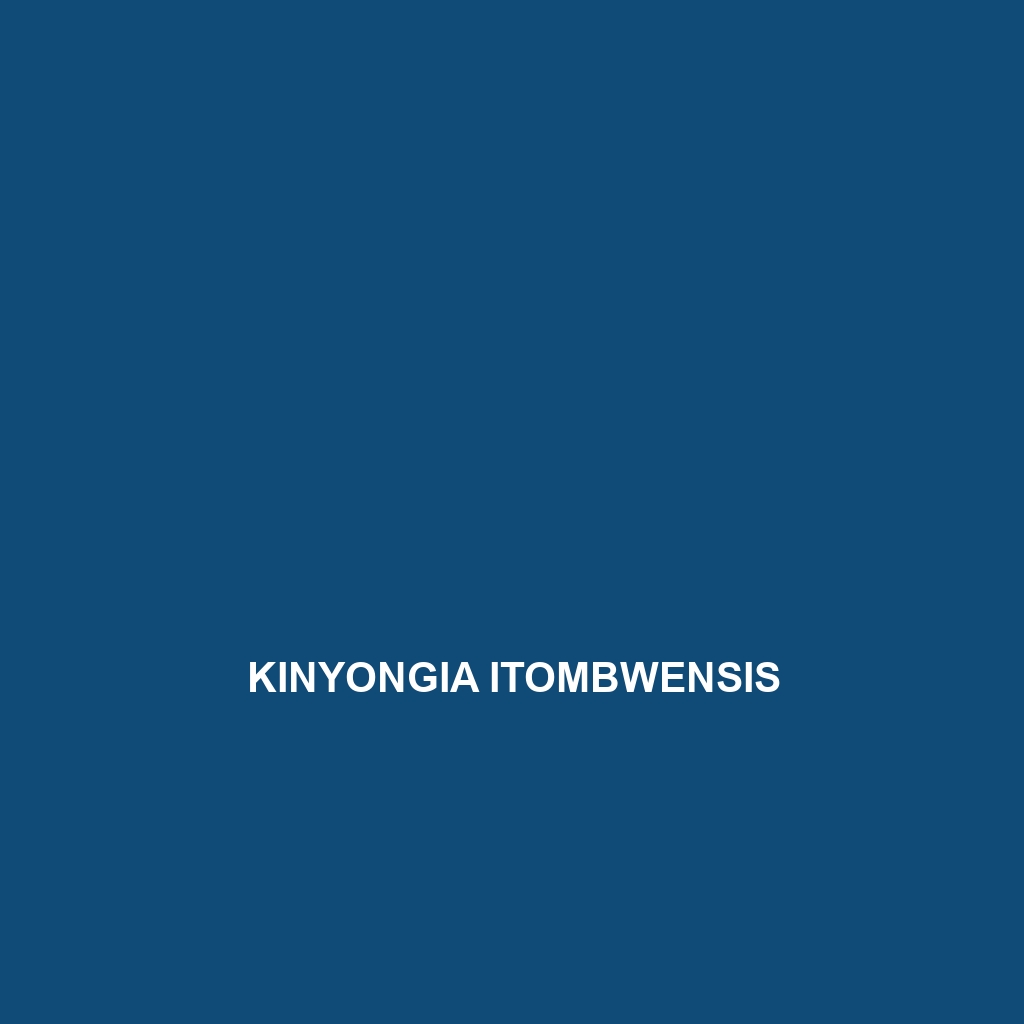Common Name
Kinyongia itombwensis
Scientific Name
Kinyongia itombwensis
Habitat
Kinyongia itombwensis primarily thrives in humid, lush rainforests of the eastern regions of Africa, specifically in the Itombwe region of the Democratic Republic of the Congo. This species is adapted to live in high-altitude environments where the climate is characterized by significant rainfall and moderate temperatures. The dense vegetation of these rainforests provides a rich habitat with ample humidity and diverse plant life, which are crucial for the survival of this unique chameleon. Additionally, they may inhabit nearby savannas and temperate forests that offer shelter and food resources, allowing them to thrive in various ecological niches.
Physical Characteristics
Kinyongia itombwensis displays several distinctive physical features that set it apart from other chameleons. Typically, this species reaches lengths of 20 to 25 centimeters, with males being generally larger than females. The coloration of Kinyongia itombwensis is primarily a vivid green accompanying shades of blue and yellow, which allows it to blend seamlessly into the rainforest foliage. This chameleon is notable for its elongated body and a prehensile tail, which aids in climbing and navigating the treetops. Its distinctive facial structures include a prominent nasal crest and bulging eyes, providing it with excellent vision to spot prey from a distance.
Behavior
The behavior of Kinyongia itombwensis is primarily arboreal, as it spends most of its time in trees. These chameleons exhibit unique nocturnal behavior, becoming particularly active during the early morning and late afternoon. Social interactions among these reptiles typically involve displays of color changes and body posturing, which are crucial during mating rituals. They are solitary creatures outside of mating seasons, preferring to keep their distance from one another unless competing for territory. Furthermore, their capacity to change color serves as both a defense mechanism against predators and a method of communication with potential mates.
Diet
Kinyongia itombwensis is classified as an insectivore, primarily feeding on a diet rich in insects, including crickets, moths, and various beetles. They employ their long, sticky tongues to capture prey with remarkable speed and accuracy. The availability of prey is abundant in their rainforest habitat, allowing these chameleons to maintain a balanced diet to support their growth and reproductive success. They may also consume other small invertebrates, contributing to their role as essential components of the ecosystem. During dry seasons, they demonstrate remarkable adaptability, feeding on more accessible prey to survive.
Reproduction
The reproductive cycle of Kinyongia itombwensis is fascinating and intricately linked to environmental cues. Mating typically occurs during the wet season when food is plentiful, enhancing reproductive success. The females usually lay 10 to 20 eggs in a secure, hidden location, taking care to bury them in loose soil or leaf litter to provide protection from predators. The incubation period for the eggs lasts approximately 3 to 4 months, after which the hatchlings emerge fully formed and independent. Parental care is minimal, as the young are adept at surviving on their own from the moment of hatching.
Conservation Status
The conservation status of Kinyongia itombwensis is currently classified as vulnerable according to the International Union for Conservation of Nature (IUCN). The primary threats to this chameleon include habitat destruction due to logging and agricultural expansion, as well as the illegal pet trade. Conservation efforts are underway to protect their remaining habitats and promote awareness about the species. Collaborative initiatives are being implemented to ensure that local communities engage in sustainable practices that benefit both the environment and the species.
Interesting Facts
Kinyongia itombwensis exhibits some remarkable adaptations that are intriguing to researchers and reptile enthusiasts alike. One of the most interesting facts about this species is its exceptional camouflage abilities, which can change dramatically in response to its surroundings. This not only aids in evading predators but also plays a crucial role in their courtship displays during mating. Furthermore, these chameleons are known for their highly developed eyesight, allowing them to see a wide spectrum of colors, significantly more than humans.
Role in Ecosystem
Kinyongia itombwensis plays a critical role in the ecosystem as a predator of insects, helping to control populations of various invertebrate species. This chameleon’s presence supports biodiversity and contributes to the health of the rainforest ecosystem. Additionally, their role as prey for larger predators emphasizes their importance in the food web, linking different trophic levels within their habitat. By maintaining the balance of insect populations, Kinyongia itombwensis indirectly supports the overall health and functionality of their rainforest environment.
